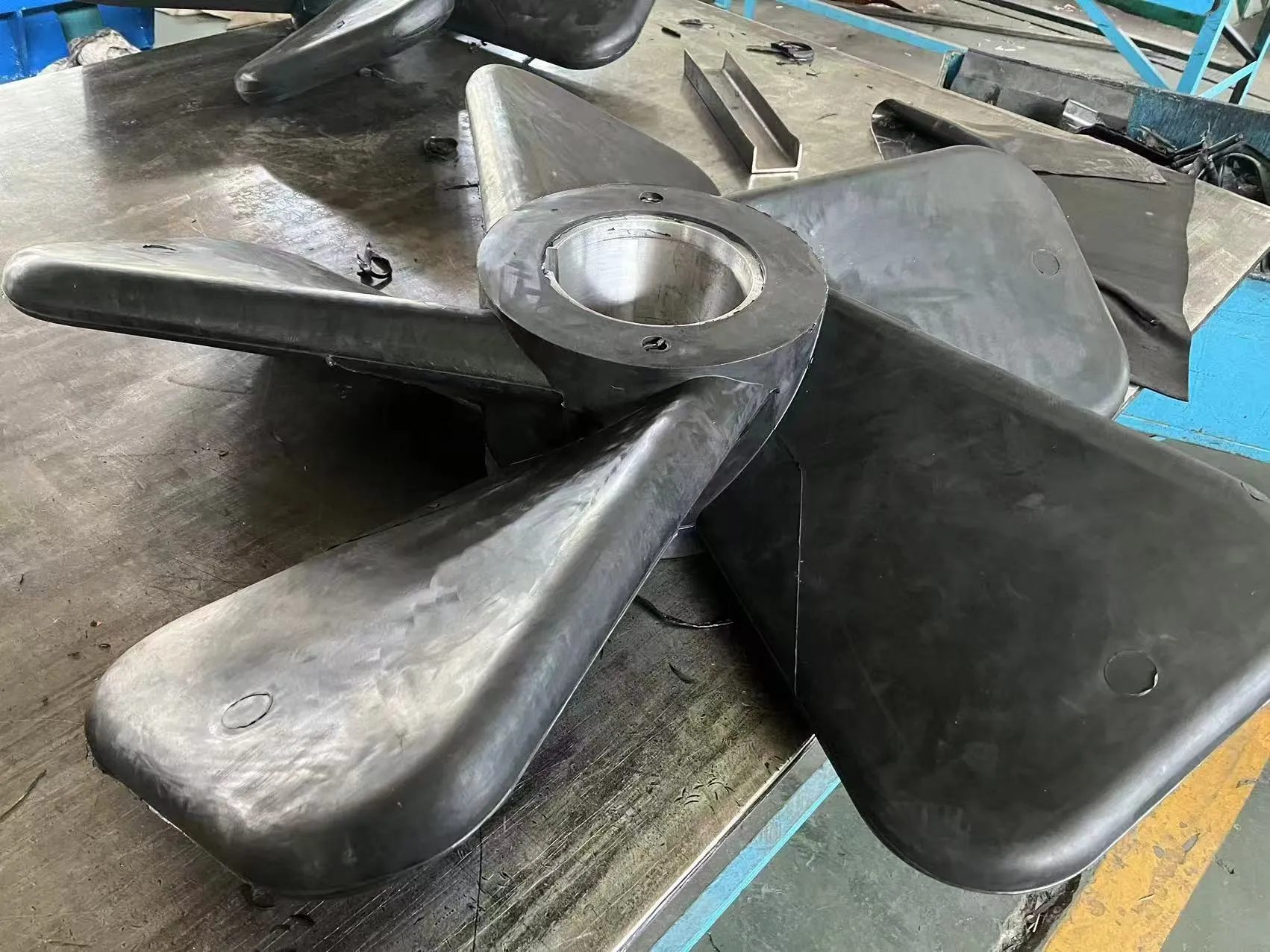The mixing blade of leaching tank plays a significant role in leaching and mineral processing, with the details as follows:
- Structure and Materials
- Structure: Mixing blades usually have structures like paddle type, propeller type, anchor type and turbine type. Paddle and propeller types are common. Paddle-type blades are simple, with a flat shape and are often used in tanks requiring gentle mixing. Propeller-type blades have a propeller-like structure, which can generate a strong pushing force and are suitable for large-capacity tanks.
- Materials: Common materials include carbon steel with rubber lining and acid-resistant steel. Carbon steel with rubber lining has good wear resistance and corrosion resistance, protecting the blade from the erosion of ore pulp and leaching agents. Acid-resistant steel blades are used in harsh environments with strong corrosion resistance, suitable for leaching operations with high acidity or alkalinity.
- Working Principle
- Driving Mode: The mixing blade is driven by a motor through a reducer. The motor provides power, and the reducer adjusts the rotation speed and torque to make the blade rotate at the appropriate speed.
- Mixing Mechanism: When the blade rotates, it pushes the leaching agent and ore pulp in the tank, creating axial and radial flows. The axial flow makes the materials move up and down in the tank, while the radial flow makes them spread in all directions. This forms a circulating flow, ensuring uniform mixing of the leaching agent and ore pulp and full contact between them, thus promoting the leaching reaction.
- Performance Characteristics
- Mixing Uniformity: High mixing uniformity is a key performance of the mixing blade. It can make the components in the leaching tank evenly distributed, avoid local concentration differences, and improve leaching efficiency and product quality.
- Energy Efficiency: An efficient mixing blade can achieve good mixing effects with lower energy consumption, reducing production costs.
- Wear Resistance: Due to long-term contact with ore pulp and leaching agents, the blade needs good wear resistance to maintain stable performance and prolong service life.
- Applications
- Gold Leaching: In gold cyanidation processes like CIP and CIL, mixing blades are used to ensure uniform mixing of cyanide solution and gold ore pulp, improving gold leaching efficiency.
- Zinc Leaching: When leaching zinc calcine, the mixing blade helps oxidize ferrous iron to ferric iron, promoting the leaching of zinc.
- Other Mineral Leaching: It is also widely used in the leaching of copper, molybdenum, silver and other metal ores, as well as non-metal minerals like fluorite and calcite.




